Abstract
Vitiligo is a dermatological disorder characterized by hypopigmentary patches that tend to become progressive over time. There are reports of extensive familial aggregation. A genetic model for this disorder was earlier proposed by us. This model postulates that recessive alleles at multiple unlinked autosomal loci interact epistatically in the pathogenesis of vitiligo. The present family study was primarily undertaken to cross-validate the proposed genetic model. Data on 194 families from the United States were collected. Each family was ascertained through an affected proband. Analyses of these data reveal that approximately 20% of probands have at least one first-degree relative afflicted with vitiligo. All types of first-degree relatives of probands show a significant risk of developing vitiligo. Results of segregation and robustness analyses reveal that the genetic model postulated by us previously is the most parsimonious model for the present family data set.
Full text
PDF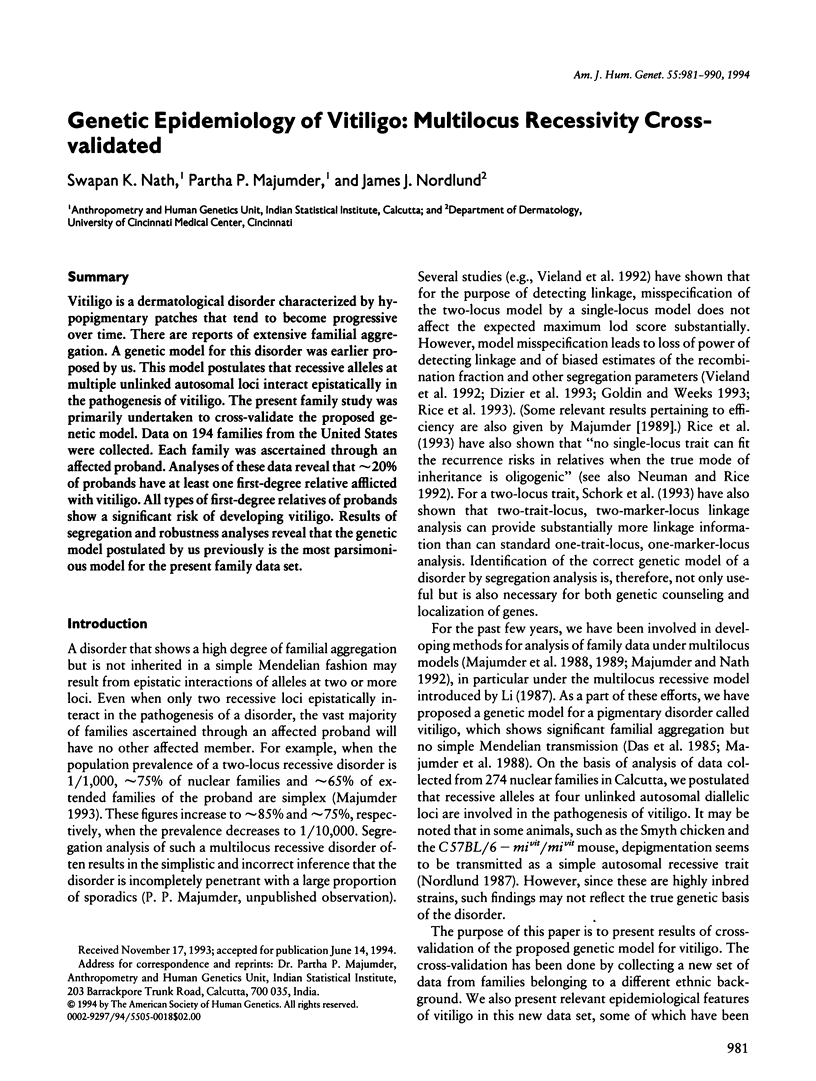
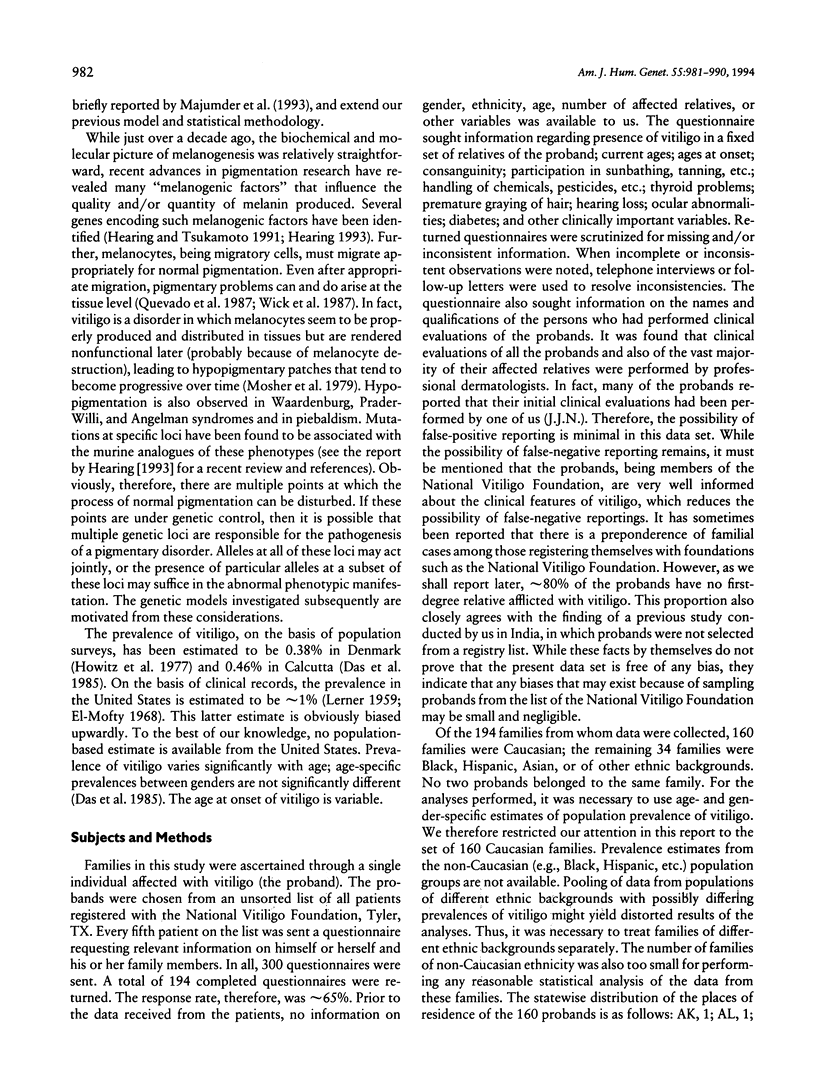
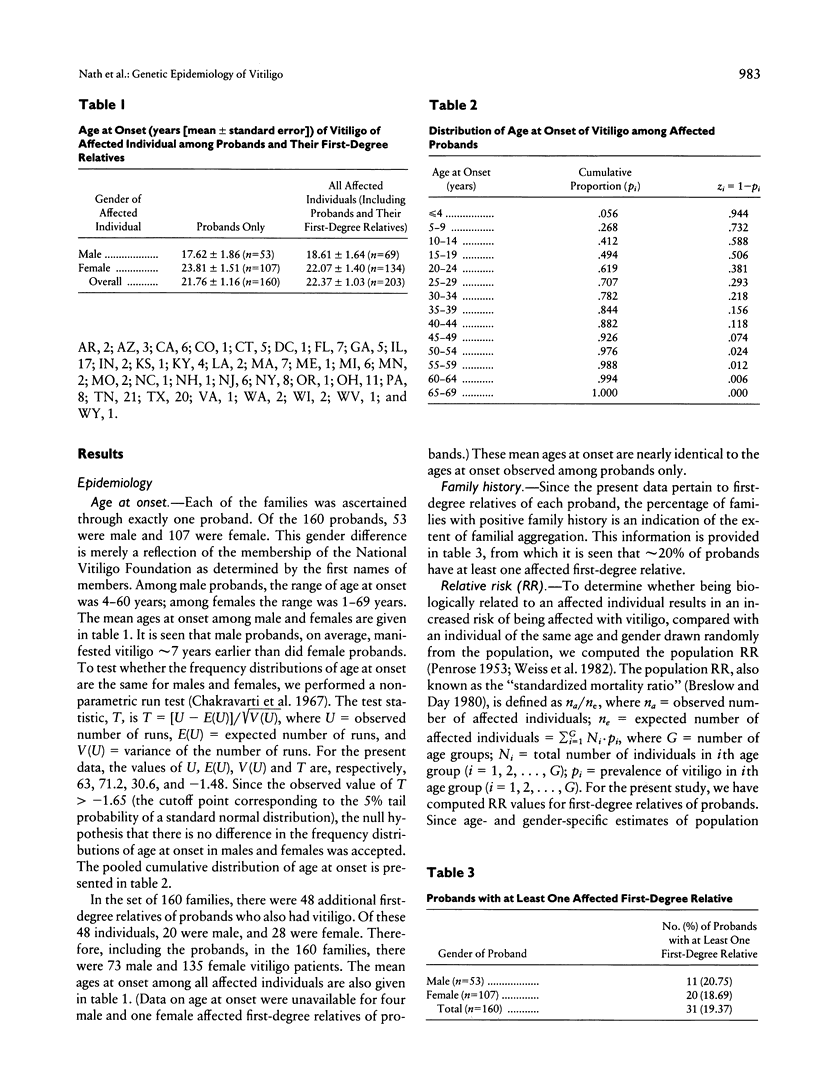
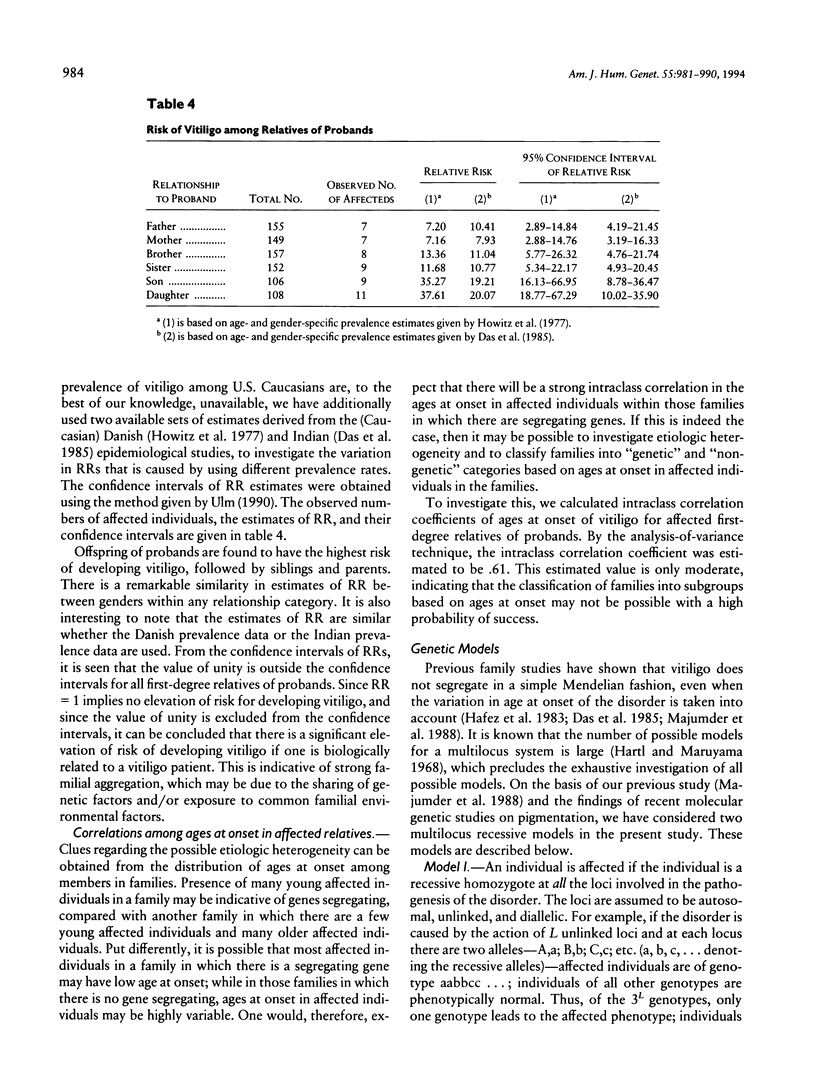
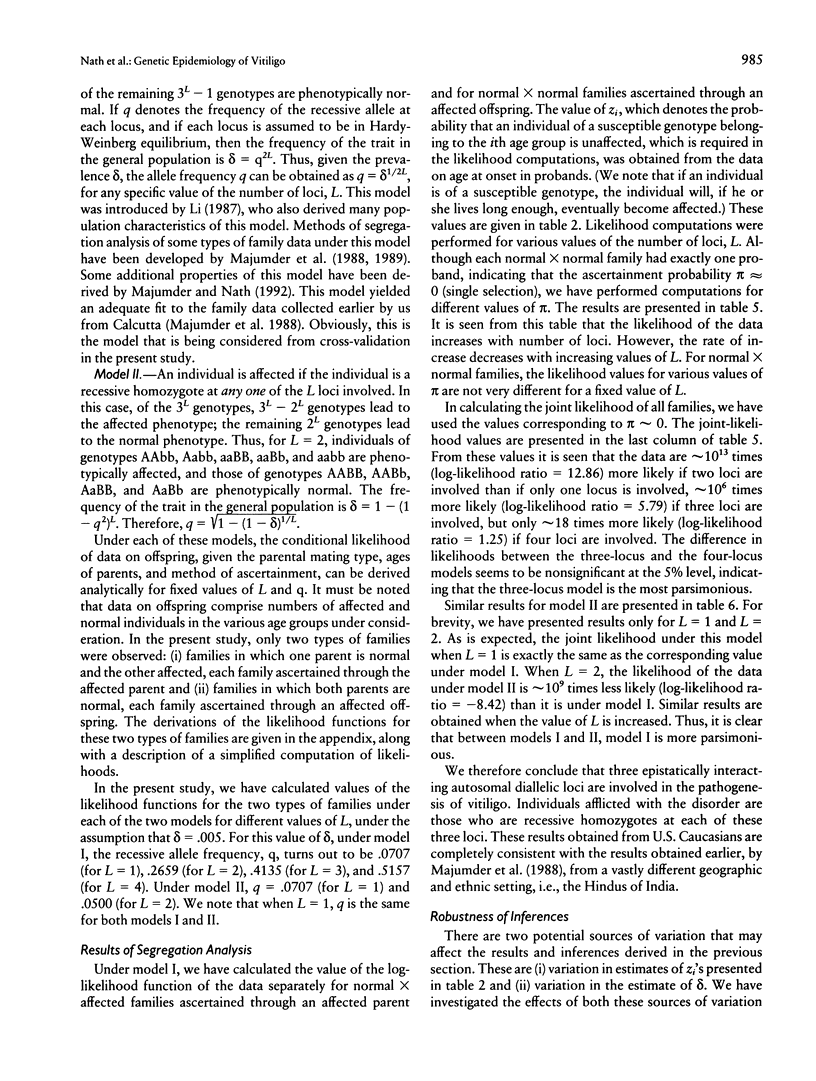
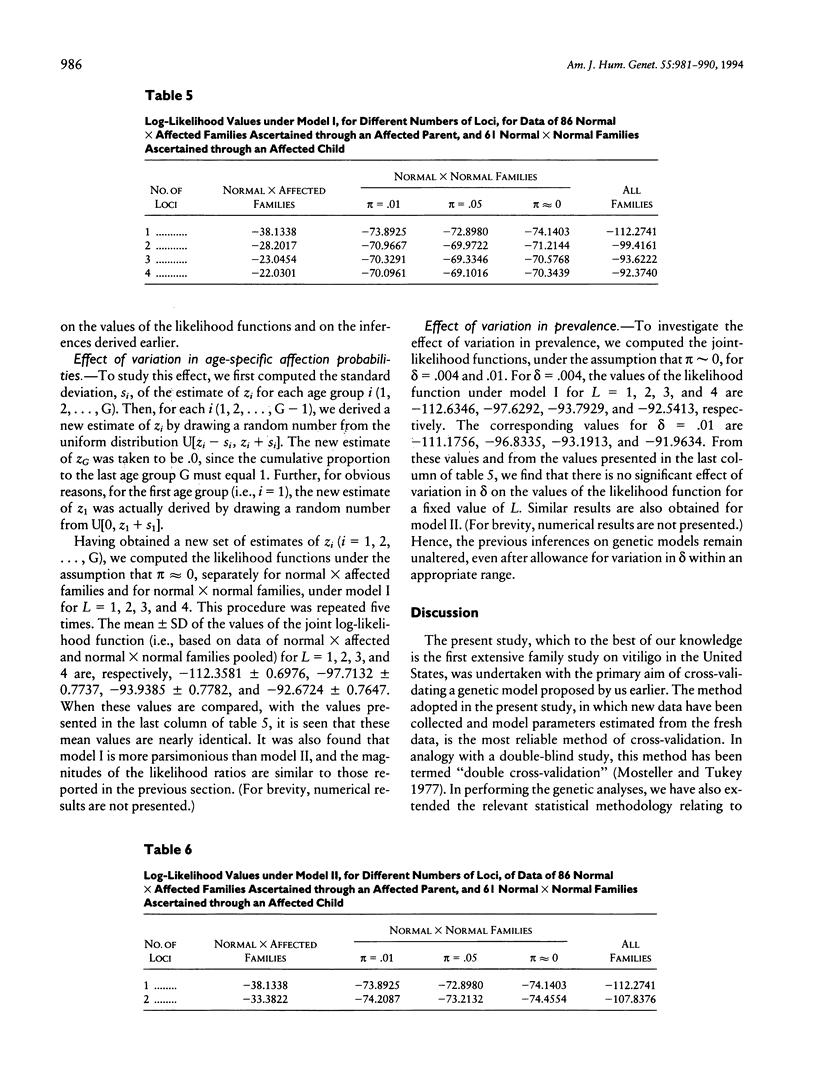
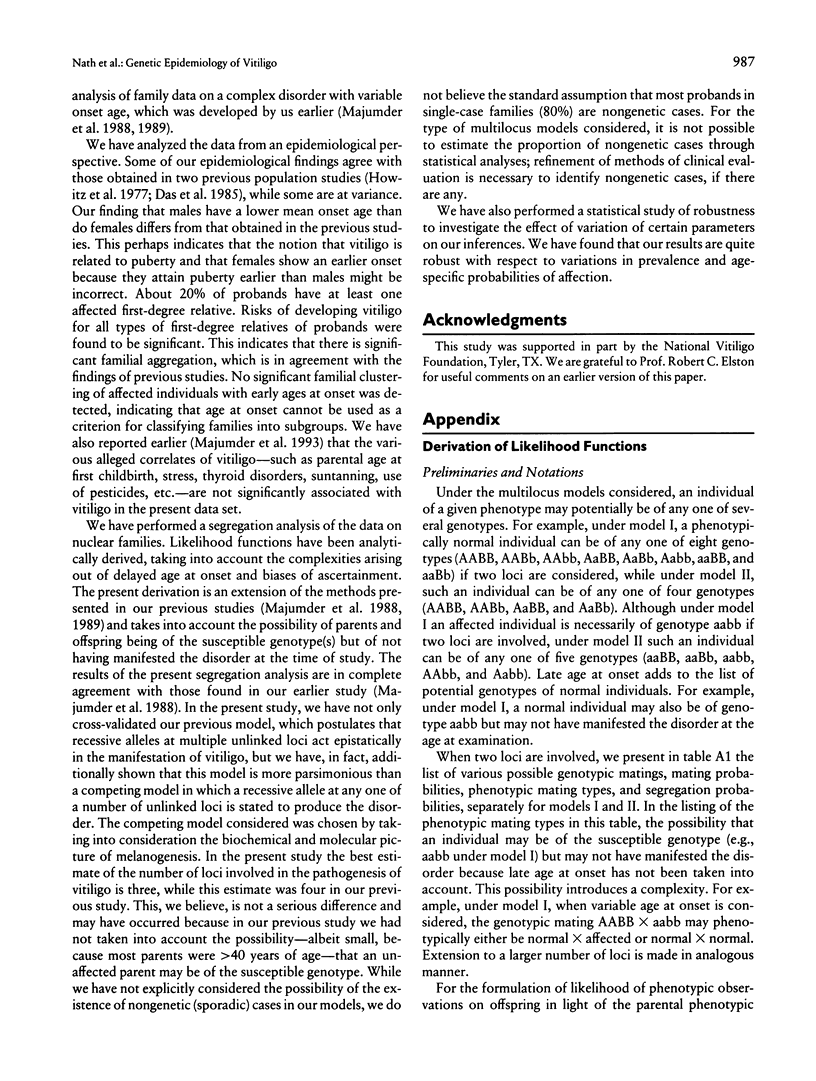
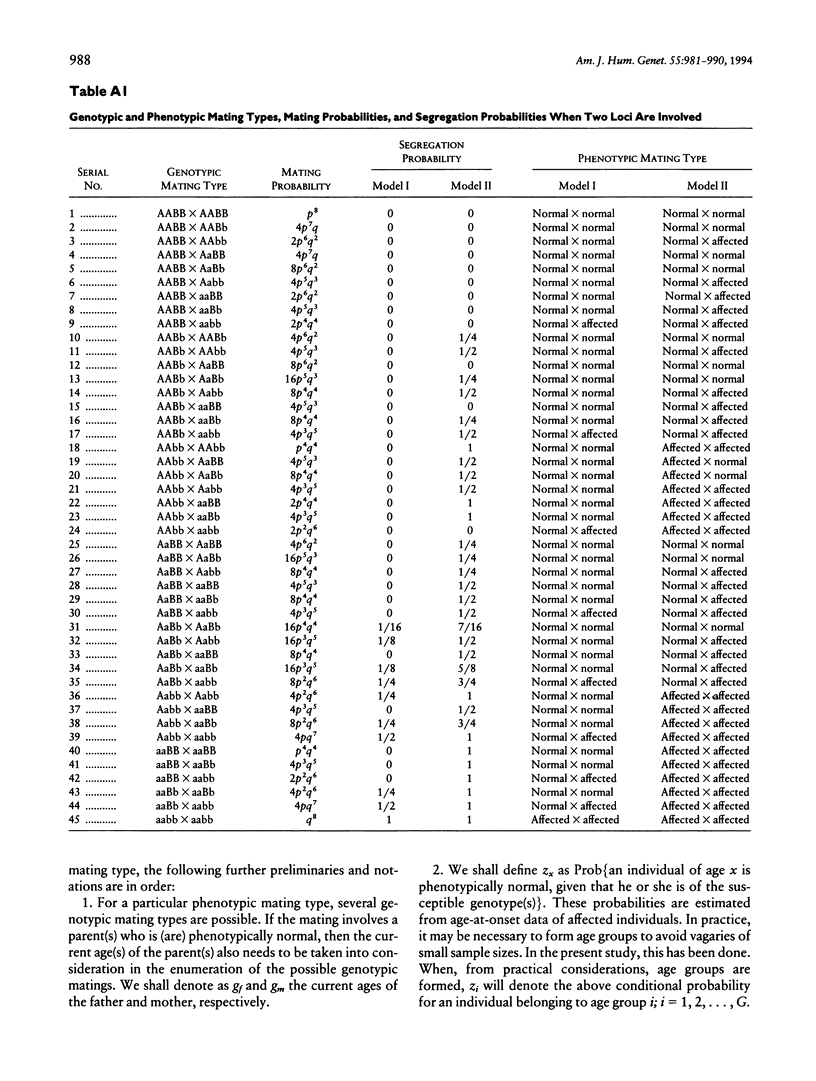
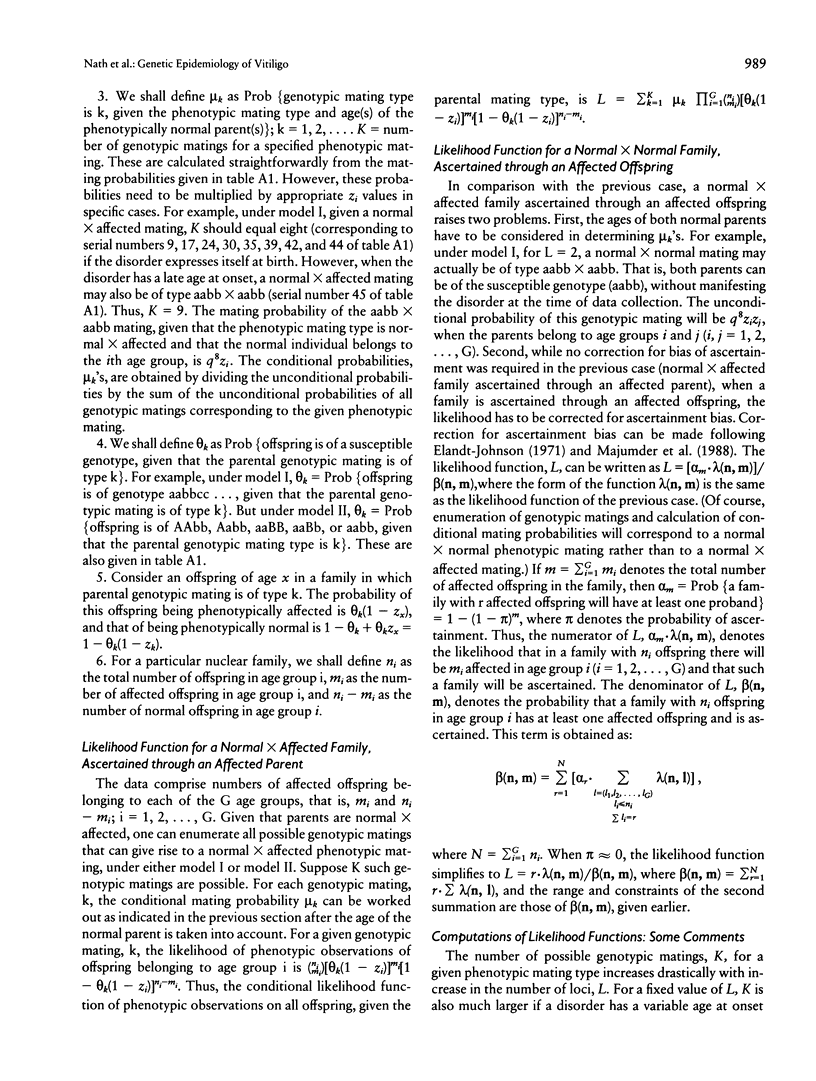
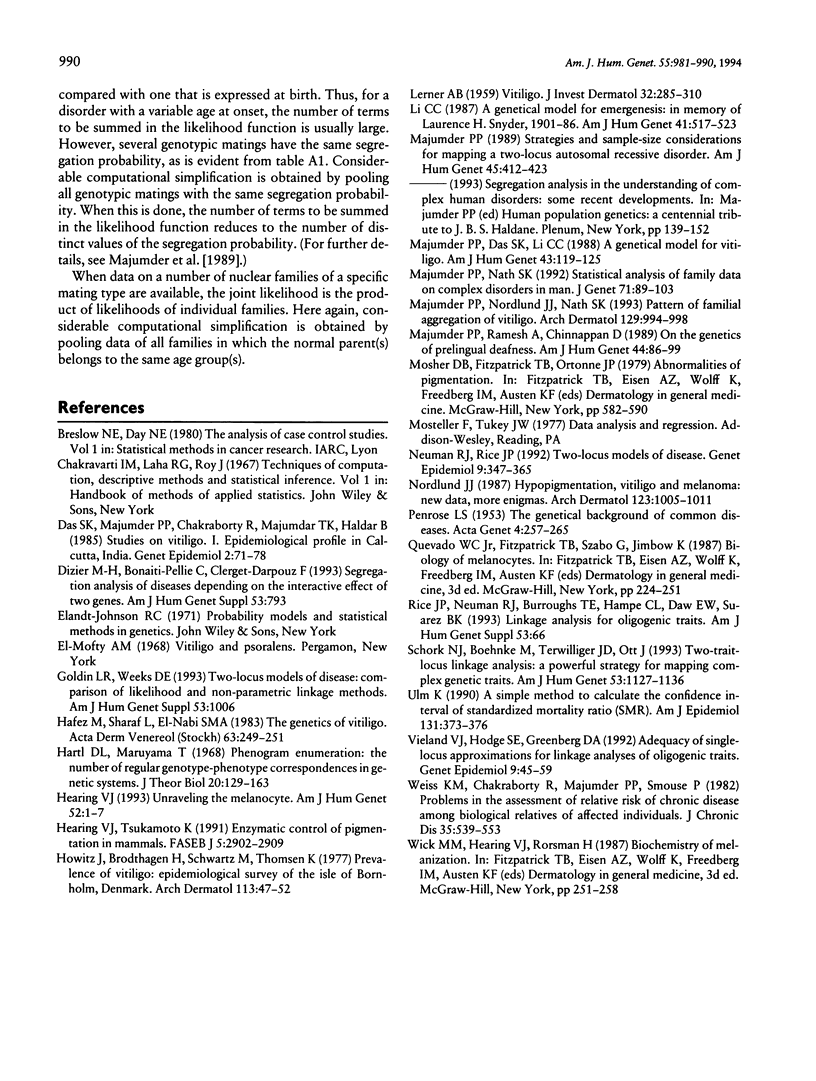
Selected References
These references are in PubMed. This may not be the complete list of references from this article.
- Das S. K., Majumder P. P., Chakraborty R., Majumdar T. K., Haldar B. Studies on vitiligo. I. Epidemiological profile in Calcutta, India. Genet Epidemiol. 1985;2(1):71–78. doi: 10.1002/gepi.1370020107. [DOI] [PubMed] [Google Scholar]
- Hafez M., Sharaf L., Abd el-Nabi S. M. The genetics of vitiligo. Acta Derm Venereol. 1983;63(3):249–251. [PubMed] [Google Scholar]
- Hartl D. L., Maruyama T. Phenogram enumeration: the number of regular genotype-phenotype correspondences in genetic systems. J Theor Biol. 1968 Aug;20(2):129–163. doi: 10.1016/0022-5193(68)90186-0. [DOI] [PubMed] [Google Scholar]
- Hearing V. J., Tsukamoto K. Enzymatic control of pigmentation in mammals. FASEB J. 1991 Nov;5(14):2902–2909. [PubMed] [Google Scholar]
- Hearing V. J. Unraveling the melanocyte. Am J Hum Genet. 1993 Jan;52(1):1–7. [PMC free article] [PubMed] [Google Scholar]
- Howitz J., Brodthagen H., Schwartz M., Thomsen K. Prevalence of vitiligo. Epidemiological survey on the Isle of Bornholm, Denmark. Arch Dermatol. 1977 Jan;113(1):47–52. doi: 10.1001/archderm.113.1.47. [DOI] [PubMed] [Google Scholar]
- LERNER A. B. Vitiligo. J Invest Dermatol. 1959 Feb;32(2 Pt 2):285–310. [PubMed] [Google Scholar]
- Majumder P. P., Das S. K., Li C. C. A genetical model for vitiligo. Am J Hum Genet. 1988 Aug;43(2):119–125. [PMC free article] [PubMed] [Google Scholar]
- Majumder P. P., Nordlund J. J., Nath S. K. Pattern of familial aggregation of vitiligo. Arch Dermatol. 1993 Aug;129(8):994–998. [PubMed] [Google Scholar]
- Majumder P. P., Ramesh A., Chinnappan D. On the genetics of prelingual deafness. Am J Hum Genet. 1989 Jan;44(1):86–99. [PMC free article] [PubMed] [Google Scholar]
- Majumder P. P. Strategies and sample-size considerations for mapping a two-locus autosomal recessive disorder. Am J Hum Genet. 1989 Sep;45(3):412–423. [PMC free article] [PubMed] [Google Scholar]
- Nordlund J. J. Hypopigmentation, vitiligo, and melanoma. New data, more enigmas. Arch Dermatol. 1987 Aug;123(8):1005–1008. [PubMed] [Google Scholar]
- PENROSE L. S. The genetical background of common diseases. Acta Genet Stat Med. 1953;4(2-3):257–265. doi: 10.1159/000150748. [DOI] [PubMed] [Google Scholar]
- Schork N. J., Boehnke M., Terwilliger J. D., Ott J. Two-trait-locus linkage analysis: a powerful strategy for mapping complex genetic traits. Am J Hum Genet. 1993 Nov;53(5):1127–1136. [PMC free article] [PubMed] [Google Scholar]
- Ulm K. A simple method to calculate the confidence interval of a standardized mortality ratio (SMR) Am J Epidemiol. 1990 Feb;131(2):373–375. doi: 10.1093/oxfordjournals.aje.a115507. [DOI] [PubMed] [Google Scholar]
- Vieland V. J., Hodge S. E., Greenberg D. A. Adequacy of single-locus approximations for linkage analyses of oligogenic traits. Genet Epidemiol. 1992;9(1):45–59. doi: 10.1002/gepi.1370090106. [DOI] [PubMed] [Google Scholar]
- Weiss K. M., Chakraborty R., Majumder P. P., Smouse P. E. Problems in the assessment of relative risk of chronic disease among biological relatives of affected individuals. J Chronic Dis. 1982;35(7):539–551. doi: 10.1016/0021-9681(82)90073-x. [DOI] [PubMed] [Google Scholar]


